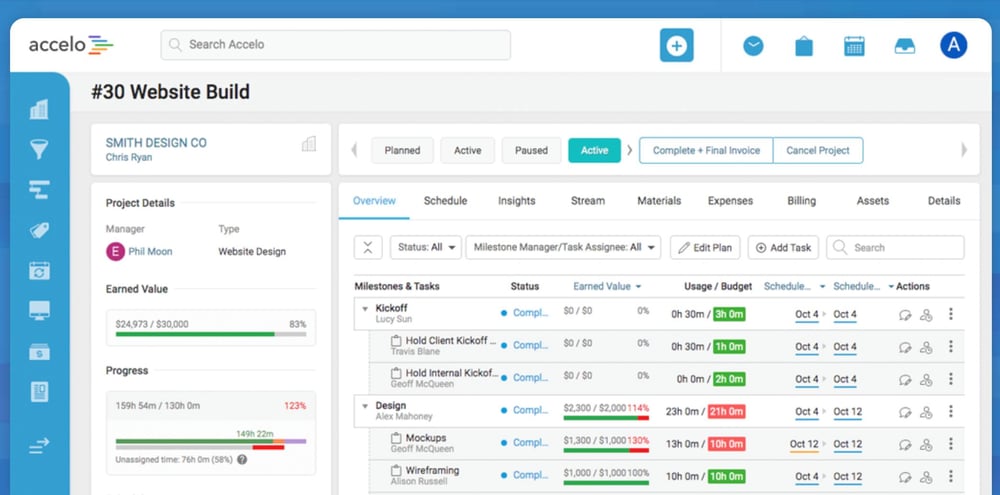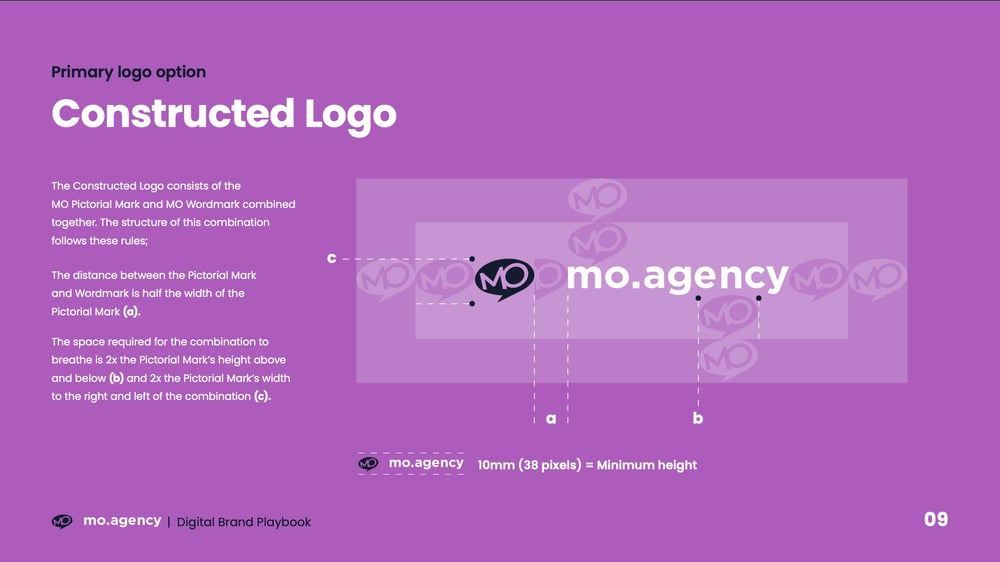Writing a good creative brief is a challenging task, but it is extremely important to get it right. You’re essentially creating the blueprint that details the objectives, strategy, and scope that will guide the creative team to successfully execute the creative project.
Creative briefs need to be concise, yet comprehensive enough to contain all the important project information. It should answer all of the creative team’s key questions and serve as a beacon that lights the path to accurate and insightful work.
Whether you're a seasoned marketer, an account manager in a busy advertising agency, or a creative team member, understanding the ins and outs of a creative brief is crucial to successfully completing your project.
In this comprehensive guide, we delve into the essence of a creative brief, why it is important, who is responsible for creating it, when it should be created, and how to write a creative brief in 10 key steps.
What is a creative brief?
A creative brief is a concise foundational document that serves as a roadmap for a creative project. As the name suggests, a creative brief is utilised by creative professionals across a wide range of industries, such as advertising, marketing, design, video production, and public relations.
It outlines the project scope and provides everyone involved in the project with the necessary context, background, and references. Ultimately, it ensures that everyone understands and is aligned on the project’s objectives and deliverables.
Why is a clear creative brief important?
Depending on the size and intricacy of the creative project, writing a creative brief can be a relatively time-consuming task. It is therefore tempting to want to skip this process and just get started with the execution of the project.
However, doing so comes at a great risk. The absence of a creative brief, or an ineffective one, will most likely result in any project leader and client’s worst nightmares: repeated correction cycles, missed deadlines, and a blown budget.
Taking the time to compile a clear creative brief is a non-negotiable, but it will result in the following benefits:
Team alignment
As the creative brief contains all the critical details of the project, it ensures that all team members, from the client to the creatives, are aligned on the project’s objectives, requirements, and deliverables.
It minimises the chances of misunderstandings which can result in delays, increased costs, and deliverables that don’t meet the client’s expectations.
Efficient project execution
A creative brief that contains all the important details sets a clear direction from the start. This means that the agency can better allocate resources, manage their time, and streamline the production process.
The creative brief also acts as the project’s central point of reference, which provides clarity and direction to any project-related communications and queries. It also lays the foundation for better team coordination and provides the opportunity for effective collaboration.
Risk mitigation
By identifying potential challenges, constraints, and risks in the creative brief, the project team can proactively address these issues and develop solutions, thereby reducing the likelihood of unexpected problems later on in the project.
Scope management
Defining the success metrics and key performance indicators (KPIs) in the creative brief, not only provides the team with a clear direction of the deliverables but also provides a benchmark for measuring the project’s success.
Furthermore, outlining the budget in the creative brief, ensures that the project stays within the agreed financial boundaries, and avoids potential scope creep.
Brand consistency
The creative brief provides a structured framework for the creative team, allowing them to channel their energy and creativity towards a clearly defined goal. The team can then ensure that the creative work aligns with the brand’s identity and resonates with the client’s target audience.
Develop and maintain stakeholders’ trust
A clear, comprehensive creative brief fosters trust from both the client and the creative team. The agency gains the confidence of the client that they are thorough, professional, and understand their needs. Additionally, the creative team feels secure in knowing exactly what is expected of them and what they need to deliver.
Continually starting projects from this foundation of trust helps to build the agency-client relationship and establishes a partnership in which both parties can thrive.

Who creates the creative brief?
Generally, within an advertising or marketing agency, it is the account manager’s responsibility to write the creative brief. As the account manager is often the primary point of contact with the client, they have a deep understanding of the client’s needs, objectives, and challenges.
Additionally, their central role within the agency provides them with strategic and project management insight which enables them to ensure that the creative brief not only meets the client’s needs but is also a practical and effective tool for the creative team.
However, it is not uncommon for the client to also create the creative brief. This depends on the nature of the business, but in these instances, the marketing manager, brand manager, or director may write the creative brief. Especially if it is an in-house creative project, or if a brief is being prepared to send to an external agency.
When should a creative brief be created?
Typically, before the brief is written, there is an initial “discovery” or “kick-off” phase where key team members from the creative team meet with the client to gather information, understand objectives, and align expectations. If required, the creative team will do further research to gather insights about for example: the target audience, competitors, technical requirements, etc.
The creative brief should then be created, at the end of the discovery phase, but as the first critical step before any conceptualisation, design, writing, or production work starts. This will ensure that the creative brief serves as a strategic blueprint for efficient project execution.
How to write a creative brief in 10 steps
The golden rule when writing a creative brief is clarity. The creative brief should be succinct (generally 1 - 2 pages), but still comprehensive enough to ensure that all the key project details are documented.
Ensuring that this information is crystal clear will eliminate confusion, focus the creative team’s work, and serve as a yardstick by which to measure the project’s success.
Here are 10 steps for writing an effective creative brief.
1. Business Overview
The first step to writing a creative brief is to encapsulate the company's background, mission, core values, and a snapshot of its history. The purpose of this is to provide the creative team with the necessary background and context to understand the nature of the business.
For example, it's impossible to create an ad campaign for Greenpeace if you don't understand what they stand for and what their goals are.
Any other business-related information that is relevant to the project - such as market position, challenges, opportunities, brand perception, and so forth - can also be included in this section.
It is important not to go into too much detail in this section as it can cause confusion. However, be cautious of also including too little information as it means that the creative team can veer out of scope when they do their own research on the company. The focus here is to keep all the information relevant to the project’s context.
2. Summarise the project
This section provides an outline of the essential aspects of the project by highlighting the key objectives, scope of work, and deliverables. It also specifies the desired outcome of the project. For example, if the project is an ad campaign, it will indicate whether the creative work needs to evoke engagement, raise awareness, or initiate conversions.
Essentially the project summary section is a snapshot of the key project details and what the targeted outcome is.
.jpg?width=1000&height=442&name=MO%20Agency%20-%20Brief%20(Project%20Overview).jpg)
3. Highlight key objectives
Precise and measurable goals should be outlined in the key objectives section of a creative brief. It identifies clear targets for the project’s execution and its intended impact. These objectives help to guide the project’s focus and the allocation of resources.
Additionally, the objectives should indicate (where applicable) how they integrate with the company’s overarching strategies and define the metrics that will measure the success of the project.
4. Identify the target audience
One of the most important pieces of information for a creative team is details about the target audience. This section should profile the intended recipients of the project’s creative work. The more insightful the target audience information is, the better the opportunity for the creative team to create a piece of work that will resonate with this audience.
It is a bonus if the client already has a set of defined ideal customer profiles (ICPs) or target personas available. Alternatively, consider the following sets of information when writing this section of the creative brief and include whichever is the most relevant to the project:
-
Demographics: Age, gender, income level, education level, ethnicity, marital status, occupation, language, etc.
-
Psychographics: Interests, hobbies, values, lifestyles, attitudes, and personality traits that provide deeper insights into what motivates the audience.
-
Geographics: The location of the target audience, whether it’s national, regional, or local, as well as any specific cultural considerations.
-
Behavioural insights: Consumer behaviour patterns such as brand loyalty, buying habits, and product interaction.
-
Needs and pain points: Specific needs and problems that the target audience experiences that the client’s product or service can resolve.
-
Media consumption: Where and how the audience consumes information, as well as the specific platforms, channels, and times they are most active and receptive.
5. List the competitors
In addition to just listing all of the client’s key competitors, it is also important to provide any additional insights that will help the creative team differentiate the client’s offerings. Information such as product or service offerings, market positioning, unique selling propositions, brand perceptions, strengths, and weaknesses will be a valuable departure point for the creative team.
Basically, any relevant type of competitor-related information that identifies opportunities for differentiation, but also informs a strategic angle, will help the team to deliver work that stands out in a crowded market.
6. Calculate timelines
Include detailed timelines to ensure that the project stays on track, resources are managed effectively, and all stakeholders have a shared understanding of when different aspects of a project will be completed.
The timelines can include milestones that represent when the project has reached respective stages of completion. For example: creative concept approval, design mock-ups, prototype development, storyboarding, etc.
One key aspect that often gets overlooked when project timelines are calculated is both internal (agency) and external (client) reviews. It is important that sufficient time allocation is made for these reviews as this is often where project delays occur. Provide a clear roadmap of when deliverables will be completed and when the key stakeholders need to review and provide their feedback.
Lastly, the final delivery date or ‘go-live’ date will be the final milestone that the project is steered towards. Once the project has reached this point, all the relevant review and quality assurance checks should be completed and the creative work will be launched.

7. Confirm the budget
This section of the creative brief should provide a clear outline of the financial parameters within which the project must be completed. Often there is a disconnect between the client’s expectations and the budget available, or the creative team feels inspired and envisions a grandiose concept that is completely out of scope.
The budget is therefore critical in managing the expectations of both sets of stakeholders (internal and external) to ensure that the project proceeds within the agreed parameters. It ensures transparency and guides the creative team to make informed decisions that align with the project’s financial constraints and goals.
8. Brand application guidelines
Lay out the rules for ensuring brand consistency across the media that will be created by the creative team. Primarily, this includes the specification of the correct logo, colour palette, and typography application. It also details the brand’s preferred imagery style, brand personality, voice and tone, as well as editorial standards that guide the use of language.
The easiest way to ensure brand consistency is to include a copy of the company’s detailed corporate identity or brand guidelines, as it will include further design rules for graphic layouts, interactive elements, and user interfaces in digital spaces. Clear examples of how these elements come together in practice will ensure that the creative team creates assets that align with the brand’s identity and ethos.
Ultimately, this section ensures that the creative work not only meets the project’s strategic requirements but also establishes a cohesive brand experience across all touchpoints.

9. Creative references
Include a list of creative examples that will be a source of inspiration and a visual or verbal guide for the creative team. These examples can include highlights from previous successful projects, mood boards to visualise the project’s aesthetic, or specific design and copywriting samples that illustrate the brand’s tone.
It can also include examples from the company’s competitors to create the necessary context for the design team and showcase industry standards and innovative approaches.
This section is especially helpful for the creative team and can significantly enhance their understanding of the client’s requirements, reduce redundancy, and illustrate relevant benchmarks for the creative work.
10. Specify final deliverables
Deliverables should not be confused with objectives in a creative brief. Whereas objectives in a creative brief outline the strategic goals and intended outcomes of a project, the deliverables represent the concrete outputs that the creative team is required to produce.
The deliverables section should include an itemised list of the exact final outputs required to successfully complete the project. For example, it can include the list of designs required for a digital marketing campaign, webpage designs for a new website, social media collateral, marketing brochures, email campaign templates, promotional videos, etc.
Additionally, it needs to include the exact specifications for the creative work. This can include information such as the dimensions for digital graphic designs, alternate layouts between desktop and mobile, file formats and size limits, social media platform versions (Instagram, Facebook, LinkedIn, X), copy length, video duration, etc.
By detailing these aspects of the deliverables, the creative brief sets clear expectations and provides the creative team with a definitive checklist to follow. The team can thereby ensure that the final deliverables are aligned with the project’s objectives, timelines, and budget.
Final Thoughts
Getting all of this information into one to two pages can feel a bit overwhelming. However, putting in the effort before the production phase kicks-off will save you a lot of frustration, heartache, and stress later in the project when things inevitably go wrong on a poorly briefed creative project.
Meticulously defining the project’s goals, context, and constraints not only guides the creative process, but also safeguards the project’s vision. This ultimately fosters trust between the client and the creative team, and ensures that the project is steered towards a successful outcome.





